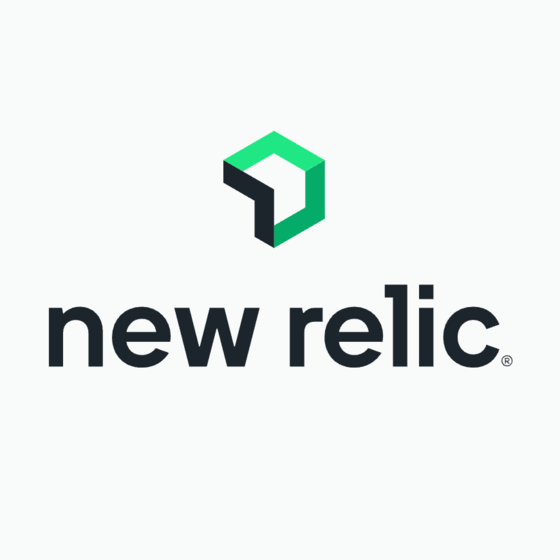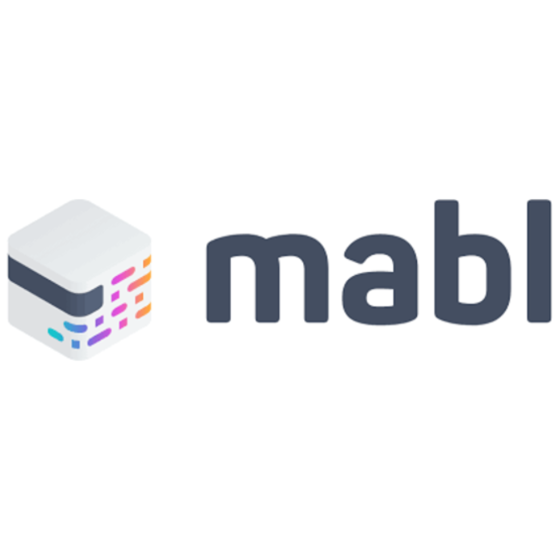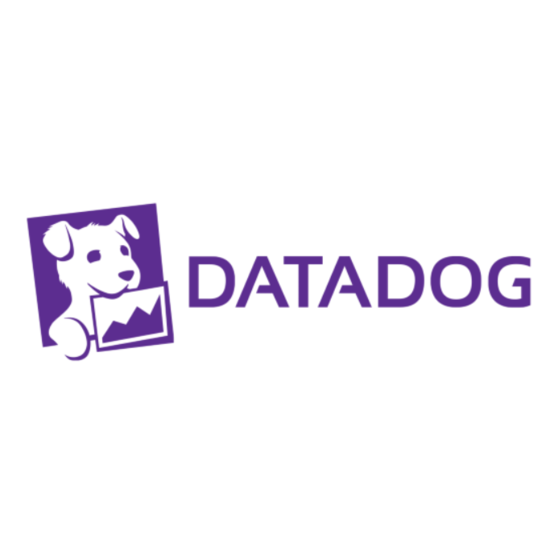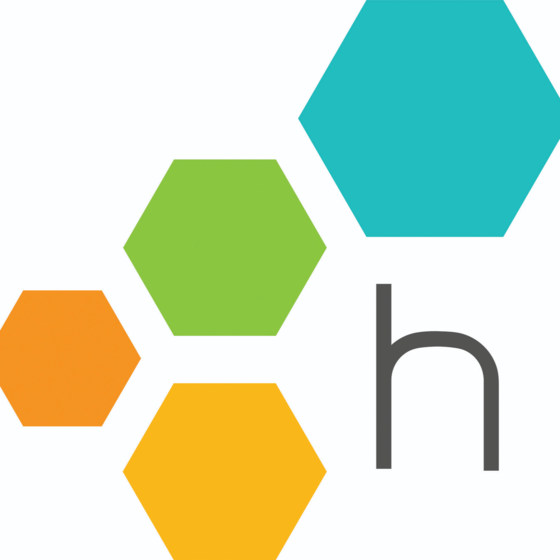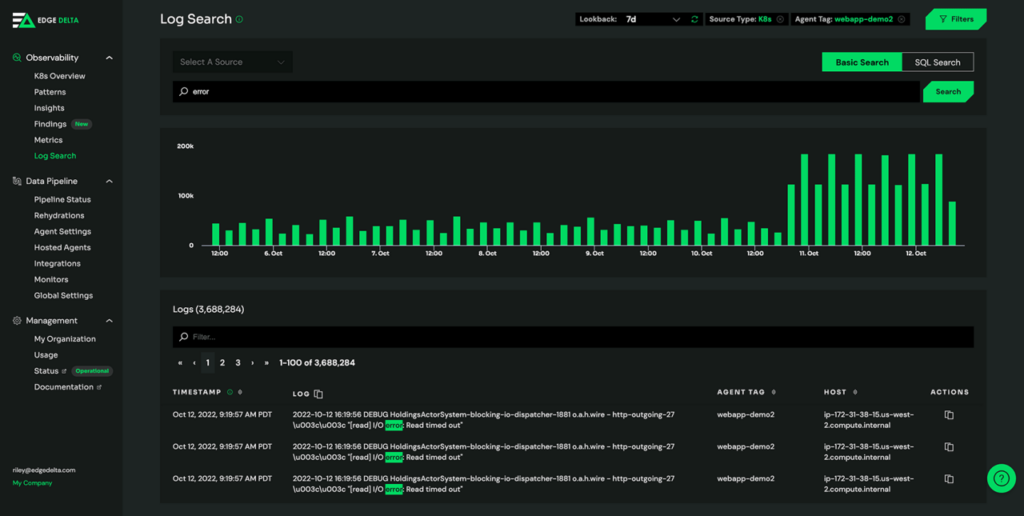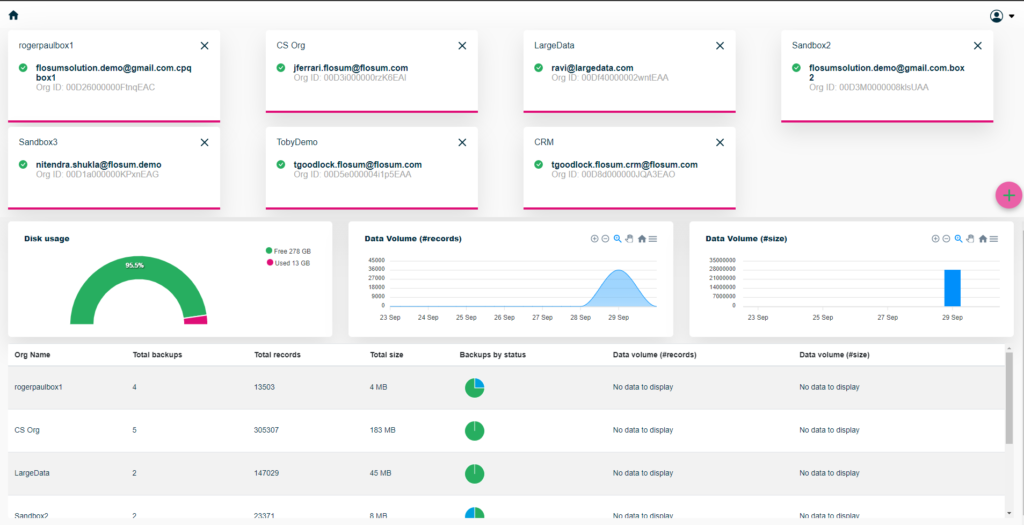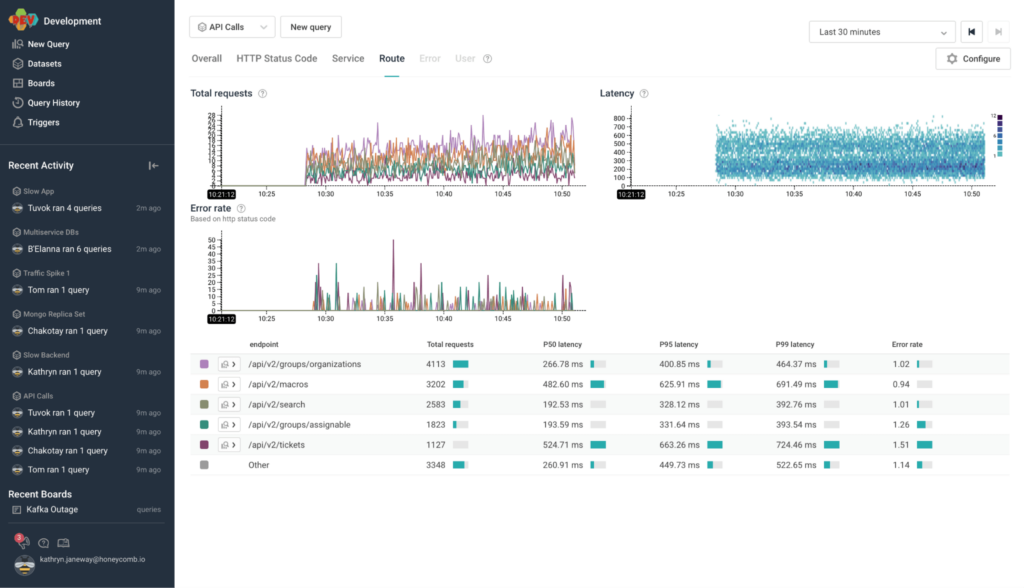10 Best DevSecOps Tools Shortlist
Here's my pick of the 10 best software from the 27 tools reviewed.
Our one-on-one guidance will help you find the perfect fit.
Choosing the right DevSecOps tools can significantly enhance security integration in the software development lifecycle and improve compliance, risk management, and deployment speed - whether you need to automate security checks, enforce policies, or mitigate vulnerabilities early in development.
However, finding the best fit can feel overwhelming with so many options available - and the challenge of balancing security with development efficiency.
In this article, I draw on my experience as a DevSecOps specialist and hands-on testing of dozens of security automation tools to break down their capabilities, ideal use cases, and how they can help you achieve faster, more secure software delivery with minimal disruption to development workflows.
What is a DevSecOps Tool?
A DevSecOps tool is a specialized software designed to integrate and automate security within DevOps, creating an absolute collaboration between development and operations teams. Typically used by developers, IT professionals, and security experts, these tools help to proactively scan vulnerabilities, manage security risks, and ensure compliance in an increasingly complex and threat-prone digital environment.
Their use extends to fostering secure coding practices, managing software supply chains, monitoring web applications and infrastructure in real time, and responding swiftly to security incidents.
With these tools, you'll gain a robust security platform with Software Composition Analysis Tools (SCA), static code analysis, and access control that ensures code quality while warding off cybersecurity malware. By placing security at the heart of software development and deployment, DevSecOps tools empower teams to create solid, secure products.
Best DevSecOps Tools Summary
| Tool | Best For | Trial Info | Price | ||
|---|---|---|---|---|---|
| 1 | Best for performance engineering and analysis | Free plan + demo available | Pricing upon request | Website | |
| 2 | Best for AI-driven end-to-end testing | Free trial available + free demo | Pricing upon request | Website | |
| 3 | Best for full-stack application monitoring | 14-day free trial available | From $15/user/month | Website | |
| 4 | Best for creating form endpoints in minutes | Not available | From $10/user/month | Website | |
| 5 | Best for real-time observability and analytics | Not available | From $10/user/month (billed annually) | Website | |
| 6 | Best for comprehensive CI/CD in a single application | 30-day free trial + Free demo | From $19/user/month | Website | |
| 7 | Best for managing a multi-cloud environment | 30-day free trial | Pricing upon request | Website | |
| 8 | Best for Salesforce-specific DevOps | Not available | Pricing upon request | Website | |
| 9 | Best for observability and debugging in production systems | Free plan + demo available | From $130/month | Website | |
| 10 | Best for container and Kubernetes security | Not available | Pricing upon request. | Website |
-

Docker
Visit WebsiteThis is an aggregated rating for this tool including ratings from Crozdesk users and ratings from other sites.4.6 -

Pulumi
Visit WebsiteThis is an aggregated rating for this tool including ratings from Crozdesk users and ratings from other sites.4.8 -

GitHub Actions
Visit Website
Best DevSecOps Tools Reviews
New Relic is a tool that offers observability and real-time analytics to help developers and operations teams understand, debug, and improve the performance of their applications. Its strong focus on performance analysis and engineering excels at helping teams refine and maintain high-quality, high-performance applications.
Why I Picked New Relic: I picked New Relic due to its robust suite of features aimed at performance analysis, including detailed analytics and flexible data visualizations. This tool offers real-time insights for developers to quickly address performance issues, making it the top choice for performance engineering and analysis.
Standout features & integrations:
New Relic features extensive real-time analytics, distributed tracing, and error tracking, which are critical for a detailed understanding of application performance.
It also integrates with various other tools like AWS, Azure, and GCP, thus extending its functionality across multiple platforms.
Pros and cons
Pros:
- Broad range of integrations
- Real-time insights for faster troubleshooting
- Powerful performance analytics
Cons:
- Customization can be complex
- Steep learning curve for some users
- Higher price point
mabl is an intelligent end-to-end test automation platform that offers AI-driven testing capabilities. As the solution is equipped with machine learning algorithms, it proves highly effective at managing and executing complex testing scenarios, justifying its standing as the best for AI-driven end-to-end testing.
Why I Picked mabl: In my evaluation, mabl stood out for its innovative application of AI to the testing landscape. I chose mabl because it allows teams to create, execute, and maintain reliable tests quickly. What makes it unique is its use of machine learning to adapt tests as your application evolves - this feature truly justifies its place as the best for AI-driven end-to-end testing.
Standout features & integrations:
mabl's AI learning capabilities truly set it apart - it auto-heals tests, meaning they evolve with your application, saving significant time during the testing phase. Furthermore, its easy-to-read test output helps users identify issues quickly.
On the integration front, mabl plays well with others, providing integration with popular CI/CD and IDE tools such as Jenkins, Bamboo, CircleCI, and more.
Pros and cons
Pros:
- Clear and useful test output
- Extensive integration capabilities
- Intelligent auto-healing tests
Cons:
- Limited capabilities for performance testing
- Requires learning to fully utilize AI capabilities
- Could be pricey for small teams
Datadog is a powerful tool designed to provide extensive full-stack application monitoring. With its in-depth insights across your entire stack, it firmly earns the title of the best comprehensive application surveillance tool.
Why I Picked Datadog: I chose Datadog for its unmatched ability to delve deep into every layer of your applications. Its breadth of monitoring capabilities stands out, uniquely suited for teams seeking a thorough understanding of their entire stack. That's why it's the best for full-stack application monitoring.
Standout features & integrations:
Datadog offers real-time performance dashboards, extensive automation, and advanced alerting capabilities. These features empower you to stay proactive about potential issues.
On the integration front, Datadog supports many platforms, including AWS, Google Cloud, Azure, and many more, ensuring compatibility with your existing infrastructure.
Pros and cons
Pros:
- Wide range of integrations
- Extensive automation features
- Comprehensive full-stack monitoring
Cons:
- Can be overwhelming due to the sheer volume of data
- Higher cost compared to some alternatives
- Can be complex for beginners
Headlessforms is a specialized tool that helps developers quickly set up form endpoints. This ability to facilitate speedy form creation makes it an optimal choice for tasks requiring swift form integration, cementing its place as the best for creating form endpoints in minutes.
Why I Picked Headlessforms: When it comes to setting up forms, speed and reliability matter, that’s why I picked Headlessforms. Its emphasis on rapid-form endpoint creation makes it a standout. This tool does a specific job well, which is why it's best for anyone needing to create form endpoints in record time.
Standout features & integrations:
Headlessforms offers a streamlined form creation process that bypasses server setup, a huge timesaver. It also delivers robust spam filtering features, an essential open-source component of any form tool.
For integrations, Headlessforms shines by providing webhooks that can easily connect with any of your existing systems.
Pros and cons
Pros:
- Versatile webhooks for integrations
- Strong spam filtering
- Swift form endpoint creation
Cons:
- Lack of advanced customization options
- Might be overkill for occasional form creators
- Limited to form-related tasks
Edge Delta is a cutting-edge DevSecOps tool with real-time observability and analytics powered by machine learning. Get immediate insights into your system's performance and security.
Why I Picked Edge Delta: Edge Delta delivers a powerful solution for observability and analytics that sets it apart. It harnesses real-time data to give you insight into your DevOps processes. I chose it for the list due to its exceptional capacity to handle massive volumes of data with minimal latency, enabling instant response to potential issues. It shines as the best for real-time observability and analytics, as its performance-focused design ensures timely and accurate insight.
Standout features & integrations:
Edge Delta boasts the ability to process and analyze data at the source, a unique feature that can drastically reduce costs and time for data transport and storage. Its autonomous monitoring capability also canenables you to pinpoint issues swiftly and reliably.
For integrations, it stands strong with major data platforms such as AWS, Azure, GCP, and more, providing a highly compatible solution that fits into diverse technological ecosystems.
Pros and cons
Pros:
- Broad compatibility with major data platforms
- Autonomous monitoring capability
- Efficient real-time analytics
Cons:
- Customization options can be overwhelming
- The cost may be higher for smaller DevSecOps teams
- Requires a steep learning curve for new users
GitLab offers a unified platform for managing the entire DevOps lifecycle in one application, with special attention given to robust CI/CD capabilities. It consolidates source code base management, CI/CD, and security into a single, efficient workflow, thereby earning the distinction of being the best for comprehensive CI/CD within a single application.
Why I Picked GitLab: I selected GitLab for its impressive ability to integrate numerous aspects of the DevOps lifecycle into one platform. This distinctive quality of streamlining varied tasks sets it apart from other tools. Moreover, its excellent CI/CD capabilities make it the prime choice for teams seeking to enhance their deployment process within a single application.
Standout features & integrations:
GitLab provides features like automated testing, multi-cloud deployments, and security scanning, all contributing to more efficient CI/CD practices.
It also integrates with popular tools like Kubernetes, Docker, and Prometheus, supporting effective and diverse tech stack implementation.
Pros and cons
Pros:
- Extensive integration support
- Wide range of security features
- Consolidated CI/CD process
Cons:
- Complex UI can be intimidating
- Higher cost for premium features
- Steeper learning curve for beginners
VMware is a well-established provider of cloud computing and virtualization software and services. VMware supports private, public, and hybrid clouds, making it an excellent option for businesses to manage their IT environments efficiently.
Why I Picked VMware: While considering various tools for multi-cloud environment management, I selected VMware because of its comprehensive cloud solutions and extensive track record. VMware offers diverse solutions for data center, cloud infrastructure, networking, security, and digital workspace technologies. It simplifies multi-cloud management with ease.
Standout features & integrations:
VMware offers robust features like centralized management, network and security virtualization, and intelligent operations. It allows organizations to manage multi-cloud environments efficiently and securely.
Moreover, VMware integrates with other leading solutions such as Amazon Web Services (AWS), Microsoft Azure, Google Cloud Platform (GCP), and IBM Cloud.
Pros and cons
Pros:
- Integrations with major cloud providers
- Robust security and networking features
- Comprehensive multi-cloud management capabilities
Cons:
- Dependency on vendor-specific technologies could limit flexibility
- Some users may find the platform complex due to its wide range of offerings
- Pricing information is not readily available
Flosum is a comprehensive DevOps solution designed specifically for Salesforce. It provides robust tools for version control, continuous integration, and deployment, simplifying the whole Salesforce development lifecycle. With its Salesforce-focused features, it is indeed best for teams working primarily with Salesforce.
Why I Picked Flosum: In my selection process, Flosum stood out due to its targeted capabilities for Salesforce environments. It is distinct in providing a complete DevOps solution tailored to Salesforce, including features such as rollback, version control, and deployment. Therefore, I determined it would be the best tool for Salesforce-specific DevOps.
Standout features & integrations:
Flosum offers robust version control, impeccable deployments, and a comprehensive rollback feature that distinguishes it from other DevOps tools.
Moreover, Flosum integrates smoothly with other Salesforce solutions, providing a unified environment for Salesforce development.
Pros and cons
Pros:
- Absolute integration with Salesforce solutions
- Comprehensive DevOps features
- Tailored for Salesforce environments
Cons:
- Initial setup can be complex
- May be over-specialized for non-Salesforce teams
- Relatively high pricing
Honeycomb is a tool designed to provide insight into production systems, allowing for effective debugging and improved system health. As a platform for high cardinality data and collaborative problem solving, it's uniquely positioned to enhance observability in production environments.
Why I Picked Honeycomb: In my quest to select the ideal tool for observability and debugging, Honeycomb stood out due to its robust feature set and ability to handle complex, high-cardinality data. Honeycomb is the best tool for debugging and ensuring reliable observability in production systems because developers can ask any necessary questions to fully understand their software's behavior.
Standout features & integrations:
Honeycomb’s standout features include its dynamic sampling, which reduces noise, and its trace view, allowing for clear visibility into requests' path.
Additionally, Honeycomb's Query Builder enables complex queries, aiding in-depth debugging. Honeycomb provides vital integrations with numerous platforms like Kubernetes, AWS, and GCP and tools like Terraform, making it flexible and versatile.
Pros and cons
Pros:
- Supports a wide range of integrations
- Robust trace view for improved observability
- Great for high cardinality data
Cons:
- UI may be overwhelming for beginners
- Has a steeper learning curve
- Starting price is higher compared to some competitors
Sysdig offers comprehensive security and visibility for cloud-native platforms, including containers and Kubernetes. The tool aims to ensure the security and reliability of your applications running on these modern infrastructures. Given its thorough security metrics for containers and Kubernetes, Sysdig qualifies as the best tool for this use case.
Why I Picked Sysdig: I selected Sysdig due to its powerful approach to container and Kubernetes security. Its differentiating factor is the profound visibility it provides into Kubernetes services and workloads, along with the tool's strong emphasis on incident response. I believe Sysdig is the best tool for securing container and Kubernetes environments, offering an exceptional balance of prevention, detection, and response capabilities.
Standout features & integrations:
Sysdig delivers key features such as container runtime security, Kubernetes audit and compliance, and automated incident response. Additionally, it comes with an intuitive UI that visualizes threat and compliance data.
It integrates with Kubernetes, Docker, AWS, GCP, Azure, and numerous CI/CD pipelines, making it a perfect fit for diverse development environments.
Pros and cons
Pros:
- Wide range of cloud and CI/CD integrations
- Robust container runtime security
- Deep visibility into Kubernetes workloads
Cons:
- The free tier has significant limitations
- The interface might be complex for beginners
- Pricing can quickly increase with additional features
Other Noteworthy DevSecOps Tools
Below is a list of additional DevSecOps tools that I shortlisted, but did not make it to the top 12. Definitely worth checking them out.
- Wiz IaC Scanning
For identifying risks in Infrastructure as Code
- Octopus Deploy
For automated deployments for .NET applications
- Bitbucket
Good for integrated Git code management and collaboration
- Splunk Enterprise
Good for big data analysis and operational intelligence
- GitHub
Good for version control and collaborative software development
- Opsgenie
Good for incident management with powerful alerting functionality
- Wrike
Good for project management and collaboration in large teams
- PyCharm
Good for Python development with smart coding assistance
- Buildkite
Good for scalable and flexible CI/CD pipelines
- Open DevOps
Good for end-to-end DevOps workflow management
- Azure DevOps Services
Good for end-to-end DevOps toolchain in the Azure ecosystem
- Rollbar
Good for real-time error tracking and debugging
- Travis CI
Good for continuous integration in software development
- Site 24x7
Good for full-stack monitoring of IT infrastructure
- Tempo Timesheets
Good for time tracking and reporting in Jira
- SpiraTeam
Good for integrated project management with requirements and quality assurance
- Anypoint Platform
Good for designing, building, and managing APIs and integrations
Selection Criteria for Choosing DevSecOps Tools
My extensive experience researching and using various software tools has assessed numerous project management, DevOps tools, and blockchain tools for startups and more established businesses. I've tried and tested each of these software tools that made it onto my list to ensure they meet specific criteria.
Core Functionality
For this type of software, the core functionalities I deem essential include:
- Project Management: The tool should facilitate planning, organizing, and managing resources, as well as adhere to DevOps trends, to complete specific project goals and objectives successfully.
- Code Deployment: The software should enable automated and streamlined open-source code deployment, allowing continuous integration and delivery (CI/CD).
- Monitoring and Error Tracking: The tool should provide comprehensive visibility into the system, enabling real-time monitoring and error tracking.
- Version Control: The software should enable efficient management of changes to documents, computer programs, large websites, and other information.
- DevOps Security Tools: The software should incorporate best practices into the DevOps security pipeline, ensuring secure coding, vulnerability scanning, and compliance enforcement throughout the software development lifecycle.
Key Features
The key features that stand out in this type of software include:
- Integration Capability: It should easily integrate with other DevOps tools in the software ecosystem to create a flawless workflow.
- Scalability: The tool should be able to handle an increase in workload or expand in response to increased demand.
- Security: Given the sensitive nature of the data these tools handle, strong software security features are a must.
- Collaboration Features: The software should foster teamwork by providing features that make it easy for team members to collaborate.
Usability
When it comes to usability, these software tools should exhibit the following characteristics:
- Intuitive User Interface (UI): Given the technical nature of DevOps and project management tools, an intuitive UI that simplifies complex tasks is necessary software. A key usability aspect is an interface that provides easy navigation and clear, concise information.
- Easy Onboarding: A tool should have a simple setup process and provide resources such as tutorials or guides that help new users get acquainted with the software quickly.
- Solid Customer Support: A readily available customer support team that can swiftly address issues or provide clarifications enhances the overall user experience.
- Customizability: Each team has unique needs. A software that offers customizable features, enabling teams to adapt it to their specific requirements, improves usability.
Most Common Questions Regarding DevSecOps Tools (FAQ's)
What are the benefits of using DevSecOps tools?
Using DevSecOps tools comes with a myriad of benefits. They aid in:
- Automating Processes: These tools automate repetitive tasks, saving time and reducing the risk of human errors.
- Improving Security: By integrating security into each stage of the development process, these tools enhance the overall security posture of applications.
- Increasing Deployment Speed: Through continuous integration and continuous delivery, DevSecOps tools enable faster, reducing the time to market.
- Enhancing Collaboration: They foster better collaboration between development, operations, and security teams, leading to more efficient workflows. Integrations with existing Salesforce DevOps tools add a layer of control over each ongoing project.
- Providing Visibility: DevSecOps tools offer comprehensive visibility into the system, making monitoring and detecting errors or threats easier code deployment.
What are the cheapest and most expensive DevSecOps tools?
The cheapest DevSecOps tools generally offer a free tier, such as certain versions of GitHub or Bitbucket. However, these free versions are often limited in their features or usage. The most expensive tools, like Splunk Enterprise, can cost several thousand dollars monthly, offering a wide range of advanced features for large organizations.
Are there any free DevSecOps tool options?
Yes, some DevSecOps tools offer free versions. For example, GitHub offers a free tier suitable for small projects and Bitbucket provides a free tier for small teams. These free options are often limited in features and scalability and may not include comprehensive support.
Other DevSecOps Tool-Related Reviews
- DevOps Monitoring Tools
- Code Review Tools For Developers
- CI/CD Tools
- DAST - Dynamic Application Security Testing Tools
Summary
In this guide, we've navigated the landscape of DevSecOps tools, investigating their strengths and the unique value they offer in different scenarios.
Here are three key takeaways to keep in mind when choosing the best DevSecOps tool for your needs:
1. Consider Your Specific Needs: To choose the right tool, consider each one's selling points and compare them to your needs. There's a solution for you, whether you need infrastructure as code, Kubernetes security, or better observability in production systems.
2. Mind the Core Functionality and Key Features: For successful DevSecOps processes, you need a solution that offers essential features like software composition analysis tools, comprehensive vulnerability databases, granular security, and DevOps compliance controls. It should also integrate well with other tools in your tech stack and have robust reporting capabilities with real-time alerting.
3. Pricing is a Major Factor: Understanding the pricing models for DevSecOps tools is crucial. Some services charge per user per month, while others charge based on data usage or number of hosts. It's essential to consider your budget and any extra costs, like setup fees, before selecting a tool.
What do you think?
We are always looking to improve our list of DevSecOps tools and would greatly appreciate your input. If you have any suggestions or personal experiences with tools you believe should be included, please don't hesitate to share them with us.
Your insights will help enhance our community's knowledge and understanding of the topic. You can contact us directly or leave a comment below. Thank you for your contribution.

